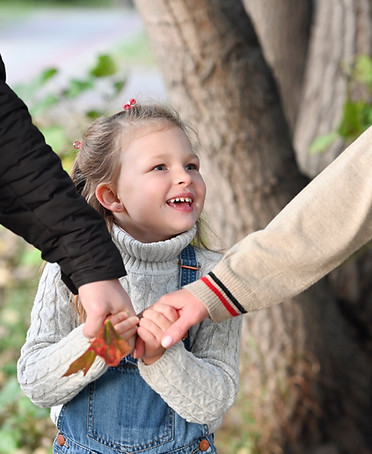
Patricia A. MacAulay
REGISTERED PSYCHOTHERAPIST


Responding
Typically, you will see that the child exhibits behaviours associated with all three relationship styles. (Human behaviour rarely fits neatly into set categories, nor does it need to do so.) But, it is usually the case that the child will have a clear preference for one of the three approaches to their relationship to you if they are not feeling safe. Knowing which style is most dominant, you have a place to start as you seek to move the relationship to a more secure footing.
Discovering that a child does not feel secure enough with you does not mean that you are an unsafe or untrustworthy person. It means that the child is not able to find that security as things currently stand and is unable to make the adjustments necessary to perceive the relationship as a completely secure one. In fact, it is completely unfair and unrealistic to expect the child to do so. We adults are the ones with most of the power and with the life experience needed to try things out, make observations, and adapt accordingly. When we take this responsibility, we model healthy relationship-building skills that the child can emulate.
When you take this approach, you are not ''catering to'' a child. You are attuning to their needs, and thereby providing the safety they require for emotional and social growth.
Once you have identified the dominant style, click to download a list of options for supporting the child in gaining a greater sense of safety in relation to you. Do not try to do all these things all the time. Take a look at the suggestions and decide what makes sense given your circumstances and the nature of your relationship to the child. Use these suggestions to inspire ideas of your own.
Avoidant / Rejecting Style

Anxious / Ambivalent Style

Reactive / Disorganized Style

Re-setting a relationship takes time and patience. If you are taking the responsibility attune more closely to the child's needs, you will not see overnight results. In fact, depending on the child's level of anxiety, they may actually react negatively to any changes that start happening. You are making a commitment to understanding and responding to a child's needs over time. As trust builds, the relationship will continue to change and will require on-going, compassionate recalibration.
An attuned relationship with an adult will help children develop three key concepts that enable them to establish themselves in relation to the rest of the world:
If you are a parent who has discovered that your child has developed this insecurity, you may be tempted to get lost in guilty feelings and self-blame. Please get support for yourself if that is the case, so that you can start to focus on what you can do now, rather than continue to look back.
If you are not the child's parent, you may feel tempted to assign blame for the child's emotional state. That is not helpful or productive.
Our social and economic systems are not organized around the care and nurturing of vulnerable people, including young children. It is a testament to parents' perseverance, particularly women, that anyone feels safe in this world!
